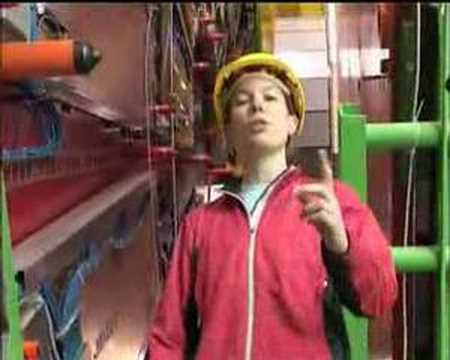update
GENEVA (AP) — Scientists fired the first beam of protons around the world’s largest particle collider on Wednesday in science’s next great step to understand the makeup of the universe.
The Large Hadron Collider — built since 2003 at a cost of $3.8 billion — provides scientists with much greater power than ever before to smash the components of atoms in a bid to see how they are made.
“The beam is the size of a human hair,” Paola Catapano, a spokeswoman for the host European Organization for Nuclear Research said after the protons were fired into the accelerator below the Swiss-French border at 9:32 a.m. (3:32 a.m. EDT).
The organization, known by its French acronym CERN, is firing the protons — a type of subatomic particle — around the tunnel in stages, several miles at a time.
Once the beam has successfully been tested in clockwise direction, CERN will send it counterclockwise. Eventually the two beams will be fired in opposite directions with the aim of smashing together protons to see how they are made.
The startup — eagerly awaited by 9,000 physicists around the world who will conduct experiments here — comes over the objections of some skeptics who fear the collisions of protons could eventually imperil the earth.
The skeptics theorize that a byproduct of the collisions could be micro black holes, subatomic versions of collapsed stars whose gravity is so strong they can suck in planets and other stars.
“It’s nonsense,” said James Gillies, chief spokesman for CERN, before Wednesday’s start.
CERN is backed by leading scientists like Britain’s Stephen Hawking in dismissing the fears and declaring the experiments to be absolutely safe.
Gillies told the AP that the most dangerous thing that could happen would be if a beam at full power were to go out of control, and that would only damage the accelerator itself and burrow into the rock around the tunnel.
And full power is probably a year away.
“On Wednesday we start small,” said Gillies. “What we’re putting in to start with is one single low intensity bunch at low energy and we thread that around. We get experience with low energy things and then we ramp up as we get to know the machine better.”
He said a good result for Wednesday would be to have one beam going all the way around the tunnel in a counterclockwise direction. If that works, the scientists will then try to send a beam in the other direction.
“A really good result would be to have the other beam going around, too, because once you’ve got a beam around once in both directions you know that there is no show stopper,” Gillies said. “It’s going to work.”
However, if there is some blockage in the machine, experts will have to go in and fix the problem, and that could take time.
The LHC, as the collider is known, will take scientists to within a split second of a laboratory recreation of the big bang, which they theorize was the massive explosion that created the universe.
The project organized by the 20 European member nations of CERN has attracted researchers of 80 nationalities. Some 1,200 are from the United States, an observer country which contributed $531 million. Japan, another observer, also is a major contributor.
The collider is designed to push the proton beam close to the speed of light, whizzing 11,000 times a second around the tunnel.
Smaller colliders have been used for decades to study the makeup of the atom. Less than 100 years ago scientists thought protons and neutrons were the smallest components of an atom’s nucleus, but in stages since then experiments have shown they were made of still smaller quarks and gluons and that there were other forces and particles.
The CERN experiments could reveal more about “dark matter,” antimatter and possibly hidden dimensions of space and time. It could also find evidence of the hypothetical particle — the Higgs boson — believed to give mass to all other particles, and thus to matter that makes up the universe.
Some scientists have been waiting for 20 years to use the LHC. But even their younger colleagues are excited that startup has finally arrived.
“I think it’s a very important project,” said Katie McAlpine, 23, a Michigan State University graduate who made a rap video about the project.
“It’s mostly out of scientific curiosity, what is the universe made of? How does it work? What are the rules? That’s very exciting and it’s important to advance our knowledge,” she told Associated Press Television News.
She said she was surprised by the success of the video, which has had more than a million views on YouTube and which has received approval from CERN for its scientific accuracy, especially in its success with young people.
“I was really hoping that this would get taken into classrooms,” McAlpine said. "I don’t imagine that elementary school and most middle school children will understand it very well, but a lot of parents have e-mailed me, saying I have a 9-year-old or a 7-year-old and showed them your rap and they really love it.
“If elementary kids can get excited about it, too, that’s just great.”

